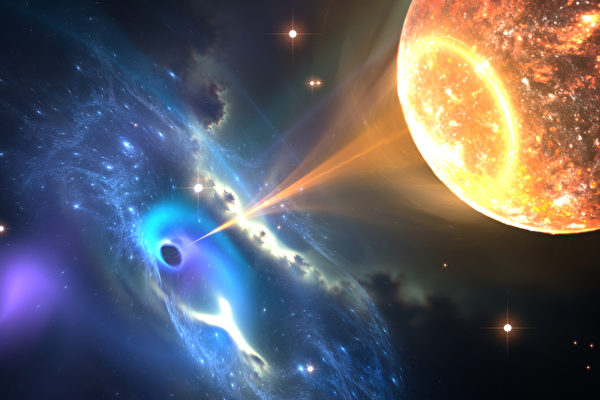Scientists have detected two powerful beams of energy shooting out in opposite directions from a supermassive black hole in a distant galaxy, marking the largest such jets ever observed, with a diameter approximately 140 times that of our Milky Way galaxy.
According to Reuters, this black hole is located at the center of a galaxy about 7.5 billion light-years away from Earth. A light-year is the distance light travels in one year, which is about 5.9 trillion miles (9.5 trillion kilometers).
Black holes are extremely dense celestial objects with gravity so strong that even light cannot escape. Most galaxies, including the Milky Way, have a massive black hole at their core. These black holes emit high-energy particles and magnetic fields into space from both poles as they consume gases, dust, and stars that fall into them due to their immense gravitational pull.
In this new study, scientists used the LOFAR (Low-Frequency Array) radio telescope network in the Netherlands to record two jet structures extending from one end to the other, spanning a length of 23 million light-years.
These super-hot jets are composed of subatomic particles called electrons and positrons, along with magnetic fields, moving at speeds close to the speed of light.
The researchers named these two jets after the giant in Greek mythology, “Porphyrion.” The length of “Porphyrion” surpasses the previous record-holder for jet length by around 30%.
“It is widely understood that jets form when magnetized material falls into a rotating black hole,” said Martin Hardcastle, an astrophysicist at the University of Hertfordshire in the UK and a co-author of the study. “They require a continuous inflow of material into the black hole, approximately equivalent to the mass of one solar mass (the mass of our Sun) per year.”
These invisible jets start small but grow over time.
“We have long known that black holes can produce these jets,” Hardcastle said. “But what’s interesting is that to produce structures this large, the jets must persist for a very long time—about a billion years.”
The “Porphyrion” jets extend far beyond their host galaxy, with an energy output equivalent to several trillion stars like the Sun.
Hardcastle noted that these jets may heat the gas in interstellar space, potentially impeding the formation of new stars since new stars require cooling gas clouds, and they could potentially harm habitable planets.
Researchers pointed out that the supermassive black hole in the Milky Way galaxy is currently in a quiescent state and does not exhibit such jets.

